Find Out How Much Bed Bug Exterminators Cost Near You | Bed Bug Treatment & Removal
The national average for bed bug treatment is around $260, but ranges between $250 – $900. Bed bugs can be a pain to deal with but anything is possible with the best bed bug treatment near you.
As many as one in five Americans have either had bed bugs in their home or known someone to have experienced the pest of bed bugs in their life. This is a huge amount of people whose life is now that much worse after experiencing an infestation.
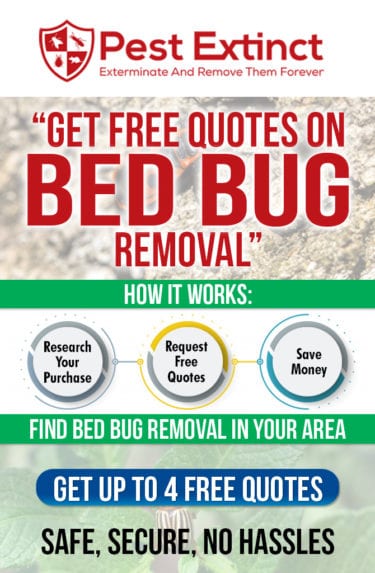
- Cimicidae
- Cimex hemipterus
- Leptocimex boueti
- Cimex lectularius
- lectularius
- hemipterus
- boueti
Then there is the possibility of your children’s schoolyard embarrassment should others find out.
Luckily, for many people, the situation is easily resolved through fast action and quick thinking, but what if it’s too late? Then it sounds like you need to Google for “bed bug treatment near me” fast!
But how much does this cost you? Will it break the bank, or are there any effective ways to address this without needing to hire someone? To help you out, below is everything you need to know about Bed Bug Exterminators, their work, and what investing in them will tend to cost.
What Do Bed Bugs Look Like?
You want to ensure you do in fact have an infestation before calling in the cavalry. If you are looking for bed bugs, chances are they will be hard to spot. These tiny creatures are thinner than a credit card and often smaller than a grain of rice. Unless they are swollen with feeding on blood they will often be hard to spot.
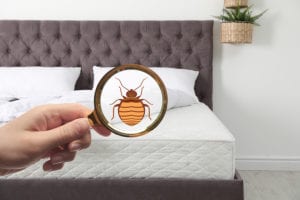
Sometimes it may not even be the bugs you spot, but their shed exoskeletons or a small cluster of their rust-colored droppings. Be aware of what you are looking for before searching and make sure you correctly identify them.
Other insects are occasionally mistaken for bed bugs. Just remember: bed bugs have antennae and six legs. If you find anything with eight legs, it may be lice or mites. If that is the case, you have a whole different problem on your hands.
How to Check For Bed Bugs?
If you suspect bed bugs, it may be tempting to do a thorough inspection of every mattress and pillow in the house. Be aware: Doing so unprepared can in-fact spread the insects. So make sure you clean yourself between inspections.
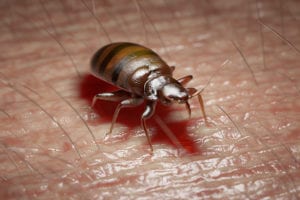
If you are careless, your investigations could spread the pests to the other rooms of the house. This will cost you extra, so before that happens make sure you take precautions.
The first sign of bed bugs might not in-fact be seeing them but the results of their visits. If itchy patches appear on your skin in small clusters or lines, you may be seeing the symptoms of having been a bit in your sleep.
Although be aware, such bites may not be bed bugs, but fleas or other pests. Try to get an expert opinion when you can.
The final way to find bed bugs is to find clusters of their skins. As the creatures hatch and grow from less than a millimeter in size, they shed their previous exoskeletons and leave them in the bed. Easily mistaken for dust, these small flaky shells are a sure sign you’re currently hosting a family of pests.
What Causes Bed Bugs?
Having an infestation is not a sign of any sort of failure. Small mistakes or overlooked methods of transfer are fairly common and even the most opulent house may have an infection at some point in its life.
The most common causes of bed bugs are:
- Travel
- Used Furniture
One of the most common ways the bed bugs are transferred is when moving purchased, second-hand items into a house. If you have just bought a new wardrobe or chest-of-drawers, make sure to thoroughly clean it before bringing it into the bedroom.
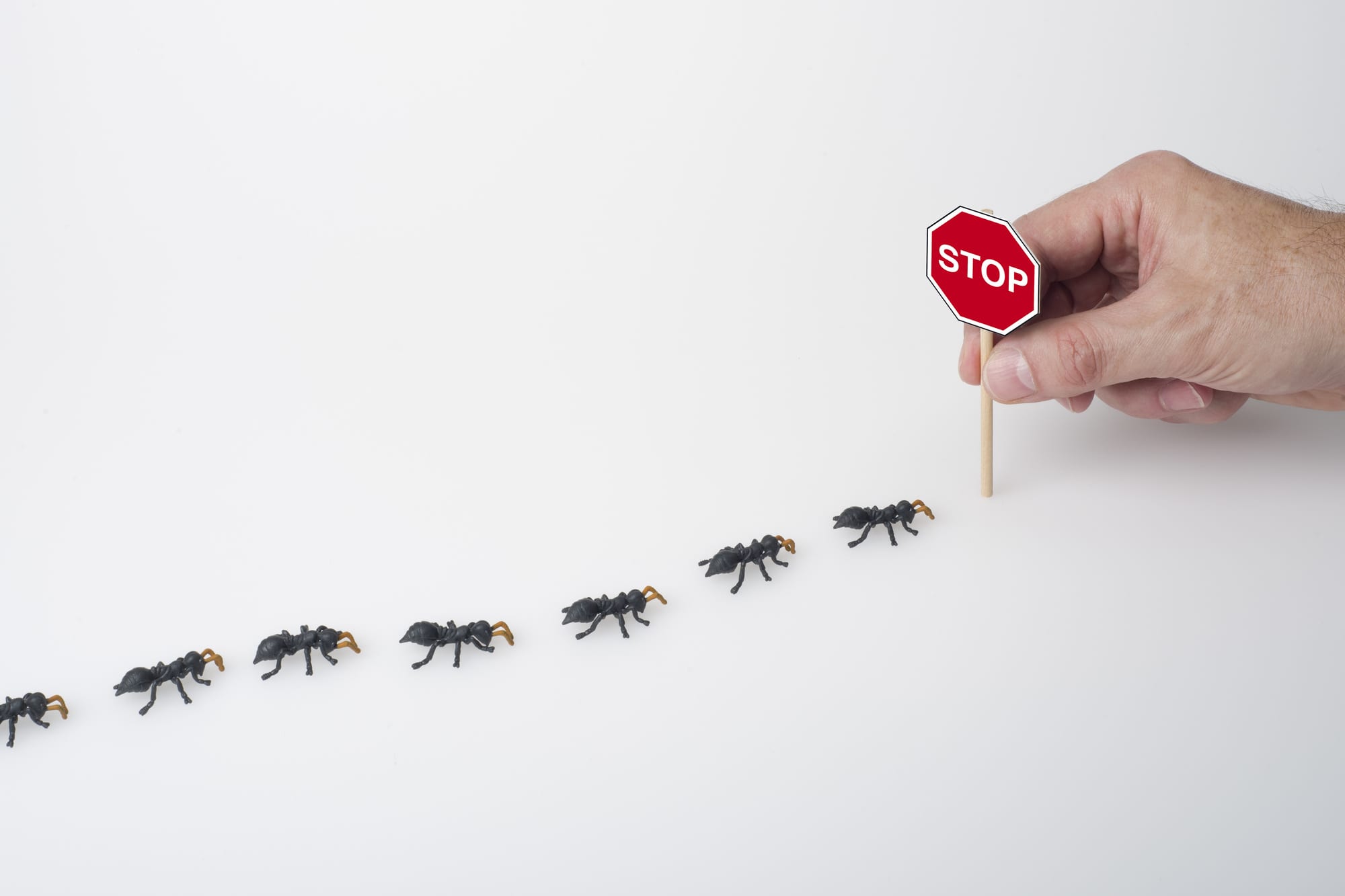
Shared laundry spaces, such as those in university dormitories, are perfect grounds for the creatures to spread. Always use a plastic bag or similar sealed container to move your clothes around. Also, if you know you’re already infested use a second different bag for the trip home. Common places where you’ll find bed bugs include:
- Hotels, motels, & B&B’s
- Apartments
- College dorms
- Cruise ships
- Shelters
- Public transit
Finding Bed Bug Treatment Near You
So you’ve found signs of an infestation. But before you pick up your phone and search for “bed bug exterminator near me”, you should understand the costs involved.
Exterminators provide a range of services, from one-off treatments to regular prevention. They also have a multitude of different chemicals and methods for ensuring the problem does not continue.
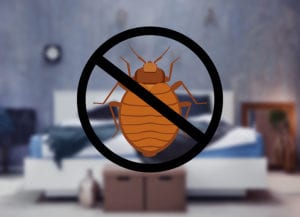
Usually, you can hire a professional to come in and inspect your home. They will be able to go over their prices and offer you their best service. They will also be able to tell you whether you even have the pests to start with.
Most states demand a professional gain a license to offer their services. This means you can be assured they have gone through a level of certification. The flipside of this, however, is the exterminator can charge a little more with that reassurance.
In general, one treatment can generally set you back any amount from $250 for a single room to over $900. The exact amount depends on the method used and the size of the location. Some exterminators charge per room, whereas others offer options per apartment or per square foot.
How you want to proceed will depend entirely on your budget and the location you live in. Naturally, expect these prices to change if you run a facility such as a hospital or residential home.
How Do Pros Kill Bed Bugs
What treatment costs will depend hugely on what method you discuss with the person performing the extermination also. There are a great many ways in which professionals get rid of pests. The main treatments currently available are chemical treatment, heat, or fumigation.
Popular methods to kill Bed Bugs Include:
- Hiring a professional
- Rubbing Alcohol
- Chemicals: Pyrethrins, Pyrroles, Neonicotinoids, Desiccants, etc
- Washing bedding
- Steam cleaning mattresses
The chemical treatment makes use of sprays or powders to simply poison the pests and kill them off. They are directly applied to the chosen areas and are effective, but potentially harmful to possessions and products in the areas.
Another option is a high-tech heat treatment that seals up the home and increases the ambient temperature to over 120 degrees. This kills off any remaining pests while also keeping the objects in the home safe from heat-related harm.
The last, and most expensive, the option is fumigation. The exterminators using this method will seal up the home from the outside air and pump it full of a gas that kills off everything in the house. Bed bugs, as well as any other possible life in the house, eventually die and leave the house pristine.
Finally, you should be aware that untidiness costs money in the case of fumigation. Extra furniture, clutter, and hoarding will often cost you more per room as the gas must seep into more items per room. Make sure your home is tidy, clean, and free from clutter before getting an estimate for the best price.
Long-term Benefits
With the right treatment and professional service, exterminators can be extremely thorough. Their service ends up both killing any existing pests and removing eggs to prevent them from returning. For this to have the highest chance of succeeding, however, it may demand more treatments of different methods. Fumigation to kill the alive bugs and steam to kill the eggs, for example.
If you make the effort to kill off the living bugs but don’t remove any eggs, the process may have all been for naught and you may end up doing it all over again. For that reason, get it done right the first time
After you have made sure your home is free from infestation, make sure you do everything you can to prevent further infection. This is especially true if you regularly buy second-hand items such as from eBay or local flea markets.
As always, after treatment, you should discuss your options with your local professionals. They will be able to give you the best advice on how to work through the location’s rooms and ensure there is minimal chance of re-infection.
Find the Best Bug Exterminator Near You
While it would be wonderful to pretend the problem is not there and will go away, that is unfortunately not true. There is no escaping the fact that extermination is costly and takes time, but for the safety of your family and your peace of mind, it is in every way worth it. Nobody can spend time in an infested home and go to bed truly happy, knowing they will wake up with more bites.
For that reason, while you could try to do it yourself, it is always recommended that you do it properly. Let the professionals in and do not waste time trying to remove the pests yourself.
So pick up your smartphone, search for “bed bug treatment near me”, and ensure you get it done right the first time.
Find Bed Bug Exterminators Near You. We work with bed bug removal companies all over the US and in your area so you can get competive quotes from top providers.